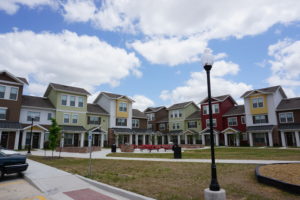Top Story
Robert C. Larson Awards 2020 Finalist: Massachusetts Housing Partnership’s Community Technical Assistance program
MA state program helps build municipal capacity and understanding of how local decisions contribute to housing shortages.
August 10, 2020
 The city of Houston has set a new strategy for leveraging a combination of public and private resources to create more affordable homes for low- and moderate-income residents. Developments are selected using a new set of criteria, which will provide maximal choice and opportunity for residents.
The city of Houston has set a new strategy for leveraging a combination of public and private resources to create more affordable homes for low- and moderate-income residents. Developments are selected using a new set of criteria, which will provide maximal choice and opportunity for residents.
For background, the city of Houston received $1.3 billion for the city’s long-term recovery from Hurricane Harvey, which devastated Houston in August 2017. Of this amount, $350 million has been targeted for the new construction and rehabilitation of rental housing. In a city where over 50 percent of residents are renters, and 46 percent of whom are cost burdened, affordable multifamily homes are an essential need.
To meet this need and ensure that the city’s resources can stretch as far as possible, the city has taken a more scrutinizing role in granting developments. This new method for deciding how to allocate resolutions of support focuses on opportunity. Applications are objectively ranked, with criteria focusing on access to the following: to the urban core, to transit corridors, to work centers, to high-ranked school districts, in mixed-income communities, and to regions of the city that are underrepresented in terms of affordable options. In 2019, the city surveyed all 11 council districts to take inventory of affordable homes and create a quota for selection. Underrepresented districts would receive up to three supported projects, and overrepresented districts would receive only one or two. The city supported transactions in neighborhoods such as Heights, Galleria, Energy Corridor, and the Second Ward, which are traditionally unaffordable to low- and moderate-income households, and include a new development, McKee City Living, which is very close to the downtown core and the opportunities held there.
The long-term impact will be to give workers easier access to jobs, give children access to better-quality schools, and give households that are financially constrained the ability to find opportunities in the neighborhoods of their choosing.
Don’t have an account? Sign up for a ULI guest account.